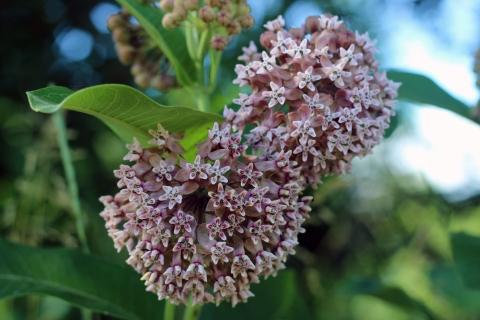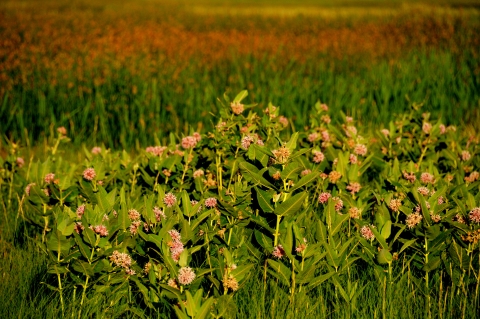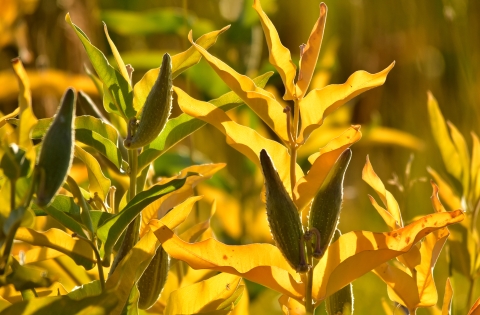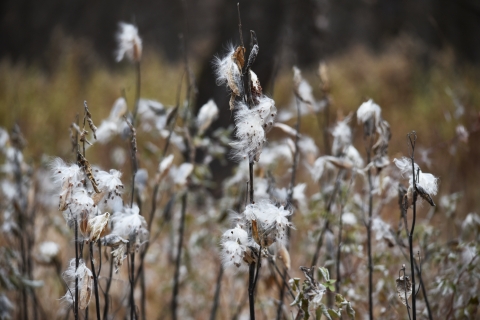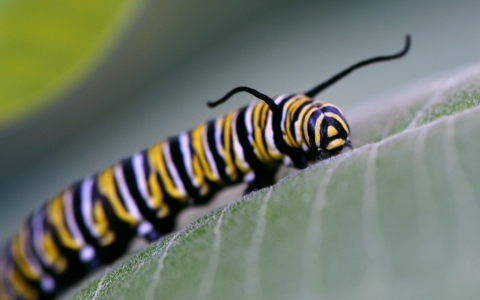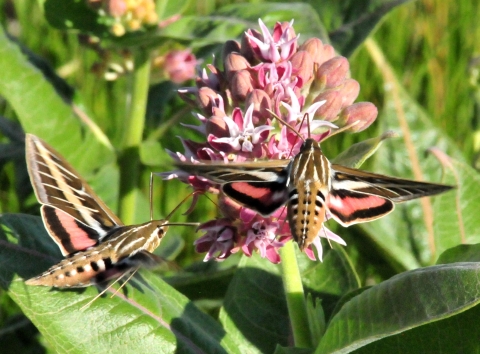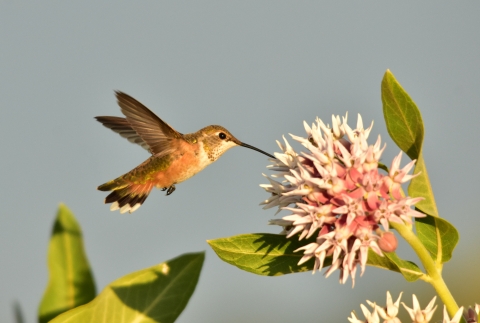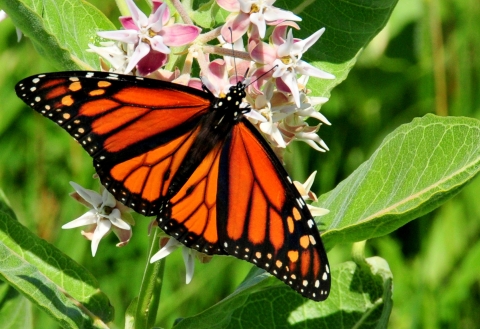June 24, 2024 - Monarch butterflies lay their eggs on just one type of plant, and that’s milkweed (genus Asclepias). Unfortunately, milkweed often has a bad reputation. While awareness is rising around the importance of milkweed (as well as other native plants) for pollinators we want to clear up any misconceptions. Because the fact is, planting the right species of milkweed for your area can be a huge help to monarchs and a number of other species.
Before we begin, meet milkweed, a beautiful plant, where monarchs lay their eggs. Want some for your yard? Investigate what species is right for where you live.
Milkweed in bloom
Common milkweed in bloom. | Image Details Showy milkweed in bloom. | Image DetailsAfter it blooms…
As summer begins to fade, milkweed plants produce seed filled pods. Seeds will continue to develop inside the pods until reaching maturity. The pods will eventually dry, splitting open and releasing their seeds that disperse with the winds. | Image Details Common milkweed plants that have gone to seed. | Image DetailsThe myths to bust
Myth #1: Milkweed is an invasive weed
Milkweed is a beneficial wildflower. It may have “weed” in the name, but there are over 100 species of milkweed native to the United States and none of them are considered “noxious weeds”. While milkweed can grow quickly, planting species local to your region and researching a bit about growing patterns is a good way to ensure it won’t take over your yard.
Myth #2: Monarch caterpillars eat more than milkweed
Monarchs caterpillars only eat milkweed. If monarch eggs are laid on plants other than milkweed, the caterpillars cannot survive and ultimately starve to death. Monarch caterpillars rely on milkweed plants and that’s why female monarchs choose to lay their eggs on milkweed plants.
Monarch caterpillar on common milkweed. | Image DetailsMyth #3: Milkweed is only useful to monarchs
This is just false. There are a number of species that use milkweed nectar and some will even eat various parts of the plant (like the milkweed bug!).
White lined sphinx moths visit showy milkweed to sip nectar. | Image Details A rufous hummingbird sips nectar from a showy milkweed flower. | Image DetailsMyth #4: Because milkweed is toxic, you shouldn’t plant it
Milkweed does contain toxins that can be harmful to pets, livestock and people. The milky sap for which it gets its name leaks out from the stem or leaves. This sap contains toxins called cardiac glycosides or cardenolides, which are toxic to animals if consumed in large quantities.
The good news? Milkweed does NOT taste good
“Animals usually do not eat milkweed unless good forage is scarce or under conditions where plants freeze, etc. “ - USDA
The myth here, is that you shouldn’t plant milkweed at all. The truth is…most animals won’t eat it because of the taste, and here are some tips for handling milkweed if you’re hesitant.
Being careful and aware goes a long way
- Wash your hands and use gardening gloves like you would any other plant
- Be careful to not include it in the hay of grazing animals and make sure there is always plenty of other food for them to forage
- Know that your pets will likely avoid it, but if you’re nervous, research the milkweed species you plant to see toxicity levels
- Take steps to prevent accidental ingestion, such as instructing children that the plant is poisonous and to avoid any contact with their eyes after touching the plant
All in all, planting milkweed is a sure way to help save the monarch. So let’s spread milkweed and cut back on the myths. Find native milkweed seeds near you.
Source: USFWS







